SUSTAINABILITY CHAMPIONS
- HANDBOOK -
YOUR GUIDE TO ACTIVATING SUSTAINABILITY IN YOUR NEIGHBORHOOD














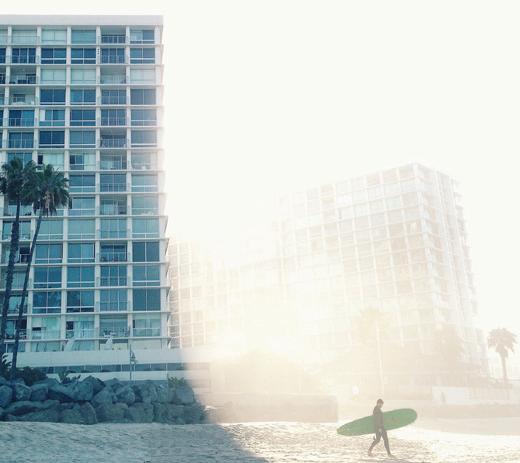


- HANDBOOK -
YOUR GUIDE TO ACTIVATING SUSTAINABILITY IN YOUR NEIGHBORHOOD
















ALLOW US TO HELP YOU NAVIGATE YOUR BUSINESS TO A MORE SUSTAINABLE FUTURE IN SAN DIEGO.
INTRODUCTION: Hello and welcome to the Sustainability Champions Handbook! Thank you for your interest in promoting sustainability and economic prosperity within your community. The goal of this handbook is to create, promote, and support active Sustainability Champions Teams within the San Diego business community. Passionate and hardworking volunteers like yourself are a key component in the success of this idea. Throughout this process you will have support from organizations like the San Diego Green Building Council and programs like the City of San Diego’s Green Business Network. Whether you’re passionate about the environment, helping businesses save money, or both, your time and effort will get the needle moving towards a more sustainable future in San Diego.
HOW TO USE THIS HANDBOOK: This handbook has been designed to give you tools to help make setting up your Sustainability Champions Team as easy as possible. On the following page, the table of contents will help you identify and locate the different sections of this handbook. Notice there are three main sections.
Background and Basics: Background information you might need in forming your Sustainability Champions Team
Resources Section: Provides planning and sustainability resources that you can use
Templates: Templates that can help you keep this process organized You do not have to use all the resources in this handbook, nor do you need to follow them in a specific order. We just included information we thought you might need and put it in an order that we felt could work best for you. There is a good deal of information and resources included in this handbook and it might seem a bit overwhelming at first. Don’t worry, take it one step at a time, and have fun. To that end, please don’t hesitate reaching out to us if you have any questions or need help implementing strategies or tips discussed in this handbook.
Also, we understand that each business community such as a Business Improvement District (BID) or Chamber of Commerce have their own set of rules or bylaws that need to be followed. This handbook is not meant to replace or add to any of those bylaws, but instead designed to work with and support your BID structure and processes. We hope this handbook will guide you and your team down the road of fun and impactful sustainability focused projects.

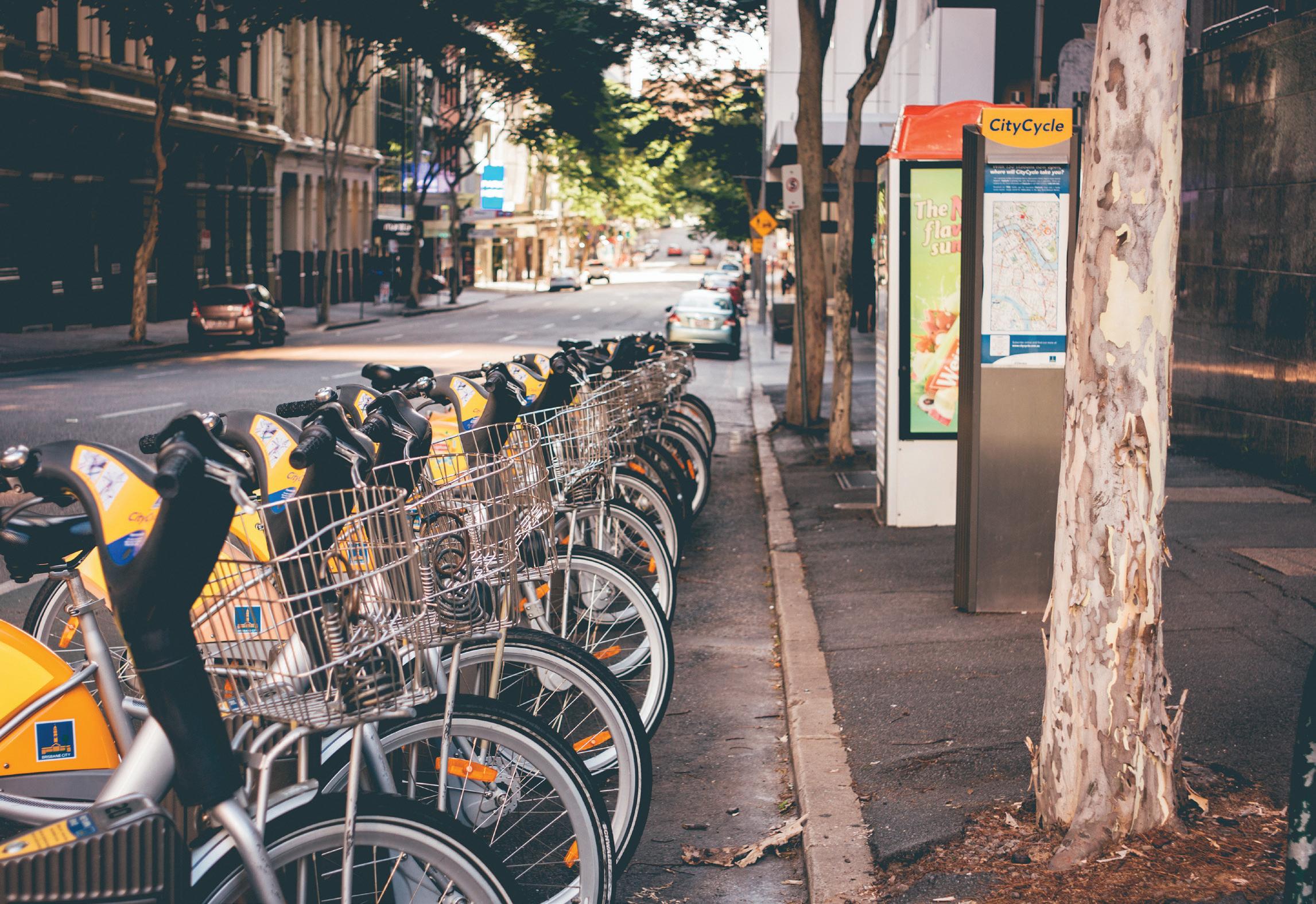
The sustainability champions handbook is a living document. Please send comments and suggestions to the San Diego Green Building Council (SDGBC): info@usgbc-sd.org.
WHY SUSTAINABILITY? Simply put, being sustainable can save businesses money and reduce negative impacts on the environment! Businesses that use less energy, less water, and produce less waste have lower utility bills as a result. The money saved on utility bills can then be reinvested back into those businesses. Another equally important benefit of being sustainable is that it’s great for the environment. Sustainable practices help reduce greenhouse gas emissions, save landfill space, and conserve one of our most valuable local resources; water.
In summary, going green can not only save businesses money, it’s the right thing to do!
Something else to consider is that the City of San Diego and the State of California have passed a good deal of legislation and policies to promote increased energy, water, and waste efficiency. Making compliance another reason to go green. To learn more about these City and State policies and regulations which may affect your businesses, please see the Policy Basics section below. Lastly, sustainability is often holistically defined as “meeting the needs of the present without compromising the ability of future generations to meet theirs” (Brundtland Report). It has three main pillars: Economic, Environmental, and Social (Triple Bottom Line) which are informally referred to as people, planet, and profit.
WHAT
OF THE SUSTAINABILITY
The purpose of the Sustainability Champions Team is to promote and support the growth of a sustainability culture within a larger community such as a chamber of commerce or a business association. As a team member, you can tap into the resources and expertise of fellow associates to help you accomplish this goal.
One great way you can promote sustainability within your organization or neighborhood is to educate your membership about the benefits of sustainable practices and what local resources are available to help San Diego businesses go green. For example, you can educate your membership about the many free services, incentives and rebates that are available for commercial business to go green or teach them simple energy, water, and waste saving tips listed in the sustainability resources section of this handbook.
WHAT
The San Diego Green Business Network is a free City of San Diego program focused on small to medium sized businesses. The goal of this program is to help San Diego businesses cut operating costs through environmental education and workshops, share impactful ideas with peers, and provide access to free marketing support. As a Sustainability Champions Team, you will have access to the sustainability resources of the Green Business Network and its partners.
sdgreenbusiness.org
This handbook is written with City of San Diego and its resources as the main focus. If you are located in a different municipality, please make sure to check what is available in your area.
WHAT IS THE SAN DIEGO GREEN BUILDING COUNCIL? The San Diego Green Building Council (SDGBC) was founded in 2002 as a community benefit non-profit organization with the goal to educate and promote sustainability throughout San Diego by helping make the buildings we live and work in use less energy, water, and waste. As a result, the SDGBC has many resources available to help you reach your sustainability goals including a Green Business Committee whose mission is to help San Diego businesses go green.
If you have any questions about what we do, who we are or simply want to reach out, please contact us at info@usgbc-sd.org.
The SDGBC (www.usgbc-sd.org) is here to support you!

When you talk about sustainability, you may want to know about these key regulations and policies that your business may be required to comply with.
CLIMATE ACTION PLAN The City of San Diego Climate Action Plan (CAP) is a package of goals and strategies that will benefit San Diego’s environment and economy. The plan identifies steps the City of San Diego will take to achieve its energy, water and waste targets. That list includes creating a renewable energy program, implementing a zero-waste plan, and creating policies like mandating the majority of the City’s vehicle fleet be comprised of electric vehicles. The CAP was also designed to help San Diego meet the greenhouse gas reduction targets set forth by the State of California. The City’s CAP was first approved in 2015 and a commitment to update the plan will be included in the City’s 2018 General Plan update. You can read the entire Climate Action Plan here: http://www.sandiego.gov/sustainability
ZERO WASTE PLAN
The City of San Diego Zero Waste Plan calls for 90% of San Diego’s waste be diverted from our landfills by 2035. Why does the City of San Diego want to be a zero-waste city? Ask any third grader and they’ll tell you that reducing, reusing, and recycling waste is the way to go. Gone are the days where there is enough space for us to throw all our trash into the landfill and forget about it. The City of San Diego plans to divert all solid waste from our landfills through strategies stated in its Zero Waste Plan. One of these strategies is creating recycling programs that reuse materials and divert waste from the Miramar Landfill. The Resource Recovery Center is a “one-stop shop” located at Miramar Landfill that will maximize waste diversion. Additionally, the City will also increase curbside recycling and curbside greenery collection to meet its Zero Waste Goals. Additionally, the city is currently capturing the methane gas created during waste decomposition and turning that gas into energy. You can read the entire Zero Waste Plan here: http://www.sandiego.gov/sustainability/zero-waste

ENERGY EFFICIENCY REGULATIONS California’s Title 24, part 6 Building Efficiency Standards mandate certain energy efficiency standards be met for new construction and existing building additions and alterations. California is currently on track to implement a net zero energy building code for residential construction by 2020 and for commercial construction by 2030. Also, the California Assembly Bill 802 states that buildings with 50,000 square footage or greater are required to benchmark their energy use which establishes an energy use baseline for those buildings and then report those results to the State starting in the summer of 2018.
WATER EFFICIENCY REGULATIONS California’s Title 20 Water-Efficiency Standards mandate only compliant low-flow, “Water Sense” water fixtures may be sold in California effective January 1, 2016. WaterSense is a U.S. Environmental Protection Agency (EPA) program designed to encourage water efficiency in the United States through the use of a special label on consumer products.
WASTE REGULATIONS In 2014, California Assembly Bill 1826 was signed into law which mandates that businesses recycle the organic waste they produce. The compliance date depends on the amount of organic and solid waste a business currently produces. At the moment, if a business produces more than 4 cubic yards of ORGANIC waste per week, they are required to arrange for organic waste recycle services. On January 1, 2019, if a business produces more that 4 cubic yards of SOLID waste per week they need to arrange for organic waste services.
For many of us, seeing a successful example is helpful to visualize what you are trying to create. We put together couple of local examples for your reference.
NORTH PARK MAINSTREET North Park Mainstreet (North Park Business Improvement District) has been one of the leaders in promoting sustainable business and neighborhood planning with best practices. Some examples of their great efforts:

Volunteer driven North Park design committee, in partnership with the planning group produces a thorough study of streets, intersections and façade design to evaluate stormwater, transportation and energy efficiency opportunities. That kind of project may require input from local planners, engineers and architects – who might be interested in creating a sustainable vision for the neighborhood.
You can Read the study online:
https://issuu.com/npeco/docs/ sustainability_study_and_ implementation_plan
The North Park initiative also promoted sustainable practices through campaigns and events to showcase greening opportunities for businesses in their network. Below are images of a sample flyer for the transportation campaign, and North Park Bikes business owner, Eddie Lopez, sharing his participation in these sustainability efforts.
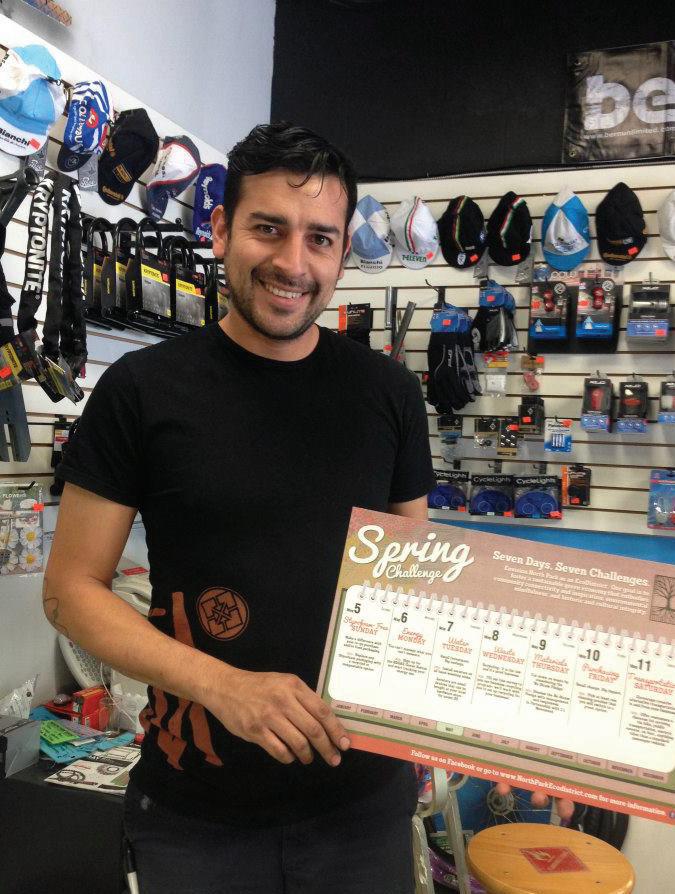

BEAUTIFUL PACIFIC BEACH Pacific Beach community organizations beautifulPB, DiscoverPB, PB Planning Group and PB Town Council are currently engaged in the PB EcoDistrict certification process, aiming to be one of the first certified EcoDistricts in North America. The PB EcoDistrict imperatives include Equity, Resilience and Climate Protection, providing engagement opportunities for our youth, elderly and unhoused neighbors in a committed carbon neutral community while continuing to reduce stressors and improve the quality of life for all.
The PB EcoDistrict successes to date are highlighted by many sustainability projects including PB Pathways and Murals, PB Parks, PB Urban Ag, and PB Counts while integrating community art, urban farming, and mobility projects throughout the community. PB Pathways and Murals was the first project installation of the PB EcoDistrict, designed to provide a neighborhood network of non-car centric safe paths with wayfinding signage connecting the local residents and visitors to shop, dine and visit without the need to drive a vehicle.
PB Pathways has resulted in increased bicycle and pedestrian mobility, less cars, reduced GHG emissions, and captured stormwater runoff while increasing public access and the economic vitality of Pacific Beach.
You can read more about the history and programs of Beautiful PB EcoDistrict here: ecodistricts.org/wp-content/uploads/2017/12/ed-casestudy-PB-Nov-17-FINAL.pdf and http://beautifulpb.com
Both North Park and Pacific Beach have been working with an EcoDistricts model to guide their work. Please visit the Case Studies section https://ecodistricts.org for more examples from neighborhoods around the country. https://ecodistricts.org/case-studies-stories-from-the-neighborhood/
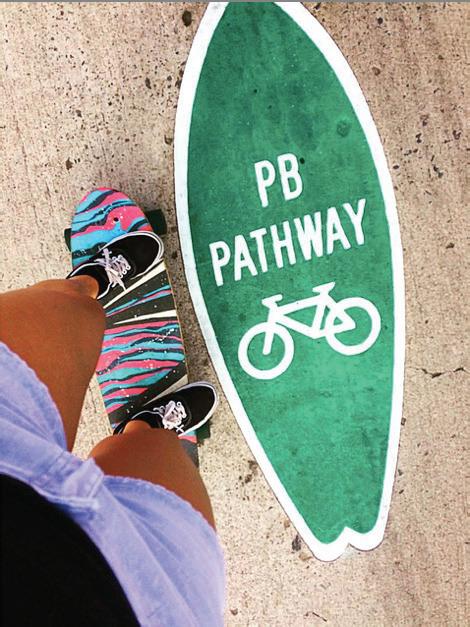
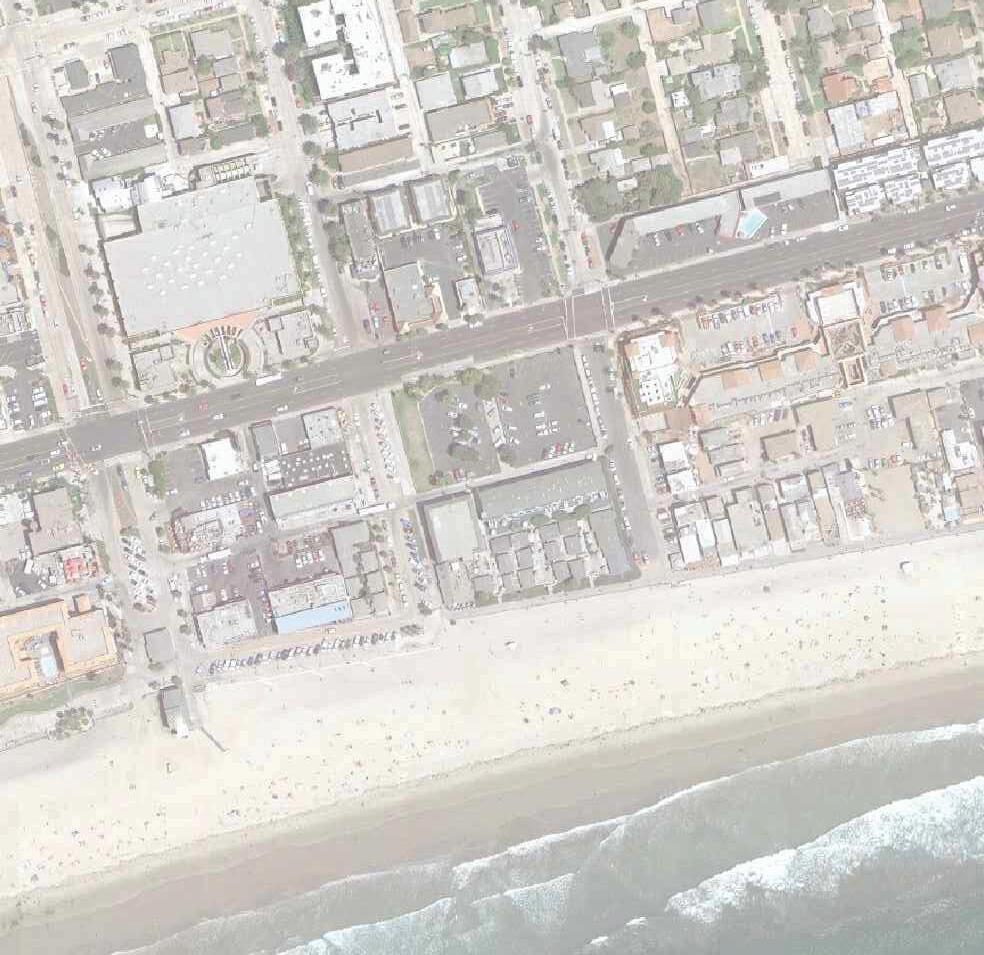

















INTRO In this section are resources dedicated to helping form and support your Sustainability Champions Team. The first set are planning resources that you can use to help form and manage your Sustainability Champions Team. The second set introduces many sustainability resources that you can use to support your sustainability programs and educate your BID membership about.
TEAM WORKFLOW-OVERVIEW OF THE PROCESS
The graphic above represents the circular workflow process. Notice that this process does not work in a straight line from A to B but rather in a loop that does not necessarily have a definite end. Although it starts with picking your team, it does not end once the team delivers on its goals. The lessons learned during the review process allow for the process to be adjusted and improved for the next sustainability project the team will take on.
SELECTING COMMITTEE MEMBERS Begin by recruiting committed and passionate committee members. Maybe you know other BID members that share your passion for sustainability and who might be willing to join your Sustainability Champions Team. Also, consider recruiting members by talking to local business community, community planning group, and council members that may not yet be actively involved in BID activities. Talking with your organization’s staff and board members may be helpful in connecting with the potential candidates. Make sure to ask your executive director (ED) if he/she would like staff members to participate as they can be great assets. The goal is to ensure the team has an extensive skill set in economic development and sustainability, and that it represents diverse perspectives of your community members.

MAKING IT EASY FOR PEOPLE TO SIGN-UP It may be a good idea to have an online space where potential interested members can sign up for your Sustainability Champions Team and give information about their interests and skills. Google Forms is a good, free tool to create such an online space. Follow the steps below to create your own intake form. Note: You will need a Google account to use Google Forms.
3 2 1
Open the Google Chrome Browser and type in “Google Forms” in the address bar. Click on the link to open Google Forms.
Once in Google Forms, choose the Contact Information template.
Once in the template-click in any field that needs editing and type your edits. All changes are automatically saved. Remember to change the title so that it can be easily recognized in your Google Drive.
Other tools that you may want to review and consider:
Sign Up Genius, Wufoo, Survey Monkey
MAKING IT EASY TO MEET Below are a few tips you might want to consider when scheduling team meetings. Most likely, many of your team members will have full-time jobs, school or family commitments during the day so meeting during lunch, early evenings or on weekends may be preferable.
• Pick a time that works with everyone to make sure you get the most participation
• Consider using free online tools like Doodle (doodle.com) to help schedule meetings
• Consider using free online tools like UberConference (uberconference.com) or Skype (skype. com) to provide a virtual meeting option so that members not able to be present on site can still participate
• Consider what audio visual equipment may be available and needed (projector, speakers)
• Talk to staff and other committee members about preferred and available meeting space that the team can use. Some offices will allow you to meet in their location, but you can also consider libraries and meeting at home or a park if your team is open to it.
To keep a track record of your efforts, you should consider capturing meeting minutes. We have created a meeting minutes template for you to get started. The template is located in the last section of this document
SMARTER GOALS One of the first tasks your team can focus on is creating a vision and setting defined goals your Sustainability Champions Team want to achieve. One approach is to define your vision first because that vision will influence what goals you want to have. When choosing goals, try to make them as specific and realistic as you can. To help you with this, we recommend using the SMARTER steps for developing your vision and goals. The benefit of SMARTER goals is that they are designed to be specific, realistic and attainable. By design, these goals have measurable outcomes that are easily monitored for progress and evaluation. If the project is not meeting your defined measurable outcomes, the issues causing this can be quickly identified and corrected. This will allow for modifications to be made so that your goals be can met as you intended. Below is the expanded SMARTER acronym that helps explain the process.
S M A R T E R
Specific - The more specific your goals are, the easier it will be to manage them and avoid confusion about what they are and how to meet them. Consider what specific details are important to the success of your project.
Measurable - Being able to measure the desired impact of your goals will help you understand if you have met your goals or not. Consider what metrics can be applied to your project.
Attainable - Your goals need to be challenging but still achievable. Make sure you have the time, resources, and skills necessary to achieve your goals.
Relevant - Your goals should try to align with your group’s vision(s). If not, it can create unwanted confusion and waste valuable member time, energy and resources. Coordinate input from stakeholders during the initial project phase.
Timely - The timing of your goals should have a start and end date. Create project timelines and milestones in the middle of the process intended to keep you on track.
Evaluated - Seek feedback and guidance throughout the process to make sure the process is going as planned. It is common to have multiple checkpoints in the process to evaluate your progress and make any necessary changes.
Reviewed - Once the process is finished, it is important to review what you have accomplished and see if there are any lessons learned that can be applied to improve the process for the next set of goals your team wants to achieve. You can use tools like surveys, review meetings, interviews to get feedback from your team and other stakeholders.
SMARTER GOALS CONTINUED Below are some examples of SMARTER goals that can help your team come up with its own goals.
• ENERGY CATEGORY GOALS: Sign up 5 businesses for locally available energy audits, within next 3 months
• WATER CATEGORY GOALS:
Deliver 3, 1hour long, water efficiency workshops in the neighborhood, in the next 12 months
• WASTE CATEGORY GOALS:
Support 5 neighborhood businesses in the process of signing up for a composting program
• EVENT GOALS:
Organize 1 sustainability focused event in the next 6 months
The achievement of each goal is an opportunity to tell a story! Make sure to include photos and/or videos of your efforts and share it via newsletters and social media – we’ll talk more about this strategy in the next section.
To get you started on these methods, we have included a SMARTER goals template as well as Work plan templates in the last section of this document.

ABCD METHOD Another method to help facilitate your group’s vision for sustainability is ABCD method proposed by the Natural Step organization. ABCD method relies on a success backcasting approach, which starts with defining the vision(s) of success. It’s as easy as A, B, C… and D!
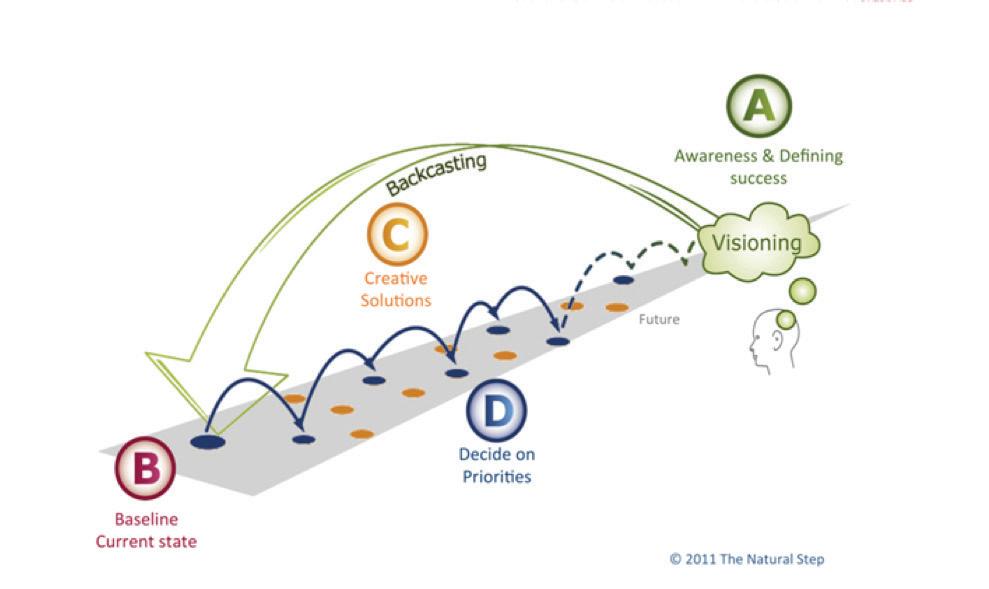
D C B A
Awareness - Identify what the vision of sustainability success in your community looks like.
Baseline - Assess where you are today in comparison to that vision. Creating a gap analysis will help you see the ‘distance’ between where you are and where you want to be.
Creative Solutions - Next step is to brainstorm solutions and ideas that can help you close the gap.
Decide on Priorities - Now is the time to prioritize your ideas based on what is most important and feasible.
For example, you realize that your business community is using too much energy and make a goal to reduce its energy use by 15%. By establishing this goal, you now know where you want to go. Next, you can perform energy audits to find the energy use baselines for participating businesses, which lets you know where you are now. What is left is understanding, planning, and designing how you are going to help these businesses get from their energy use baselines (where you are now) to reaching the goal of reducing energy use by 15% (where you want to go). Your work plan should have multiple steps and milestones along the way, acting as guide posts and markers letting you know whether you are on track or not. To learn more about this approach please visit: http://www.naturalstep.ca/abcd
TRACKING PROGRESS Tracking the progress of your work plan is a good way to understand if short-term goals, milestones, and general timelines are being met. Understanding early what elements of the work plan are not progressing as planned will allow you to make the needed adjustments in a timelier manner.
Please review the Tracking Progress Template in the templates section of the handbook

DELIVERING ON YOUR GOALS One of the main goals of the work plan process is delivering on the goals defined by your group’s vision. Having a clear understanding of what your team is trying to deliver or achieve and when the project should be completed is important to successfully achieving and delivering on the team’s goals for each project.
REVIEW AND ADJUST From start to finish, documenting project struggles and successes is an important part of this process. Using this information, the project’s progress can periodically be reviewed in order to improve and adjust the processes used for increased efficiency and ensuring the project goals are met as planned.
SHARING YOUR STORY One of the most fun and important steps of this process is telling your story. Telling your story allows for others to learn about your project’s successes and your team to be a hero. You can share what you did, how you did it, why you did it, and any lessons you learned along the way. There are many ways your story can be shared and below are some common examples that can be used.
NEWSLETTERS - Newsletters allow you to share news, images, stories and links to related documents or resources. Newsletters are a valuable resource to reach your primary audience, other businesses and community members. When sharing in newsletters be sure to have highresolution images, preferably banner sized, limit the text to 100–300 words, and have links to additional relevant information. Make sure to only use images that you have rights to and/or appropriately credit the source or photographer.
INSTAGRAM - This is a very visual platform that focuses on the use of photos and video with less use of language. Instagram is a great way to share quality photos and videos highlighting your successes. Make the most of # tags to make it easy for others to connect to your story.

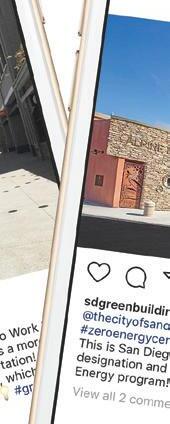

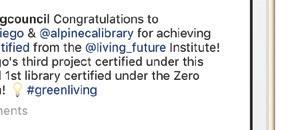
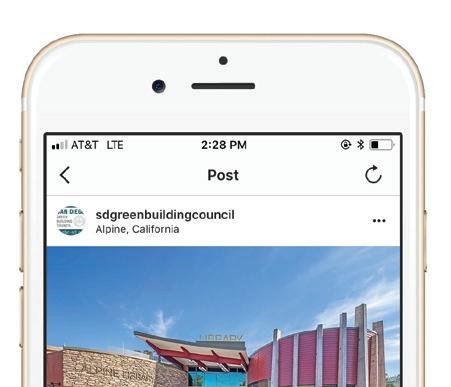

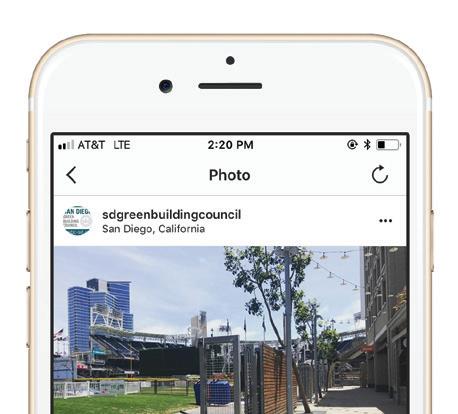
FACEBOOK - Facebook is a great platform to interact with your community. Try to answer all comments and questions from readers. This will help develop meaningful relationships with your audience. Facebook allows you to post several images in “albums”, share links, and share important written content. Also, Facebook has an “events” feature where you can pay to promote your event, invite attendees, and share updates.
EVENTS - Events are a great way of bringing the community together to promote and celebrate your group’s successes. We will discuss more about hosting events later in this handbook.
NEWSPAPERS - Does your neighborhood have a newspaper? If so, this is another great platform to share your success stories. More impactful projects may get interest from local community sources such as San Diego UpTown news, UT San Diego, Voice of San Diego or CityBeat. Don’t be shy and brag about your success.
PARTNERS - Ask your partners to share your story via their own newsletters and social media platforms, make sure to return the favor if they agree to help you out.
BLOGS - Environmental or industry blogs can be a great amplifier to your stories. Stories of green businesses can be shared via blogs that target audiences in similar business sectors, consumers or visitors. Ask your local business community what blogs are important to them.

STAYING ORGANIZED Staying organized makes it easier to avoid frustration, achieve team goals, and meet project timelines. After all, these volunteer driven projects are about having fun as much as having an impact. Staying organized will help you stay on top of your progress, staying within project budgets, and meet important deadlines. Below are some tips and questions you might consider when organizing your team.

1 2 3 4 5
What platform will your team use to store and share files? (Dropbox, Google Drive, other?)
Who will keep the meeting minutes?
Who will monitor the budget and the timeline?
Where will team contact information be stored and who will manage it?
How are we going to make decisions?
Once your team has an action plan, it will need to outreach to local businesses in order to achieve its sustainability goals. Whether the goals are to educate or to implement sustainability strategies, the business community needs to become a partner. Below are a couple outreach strategies designed to promote sustainability within your local business community.

EVENTS Events are an excellent way promote sustainable practices and strategies you wish to share with your community. For example, you could host a sustainability expo or a panel of sustainability experts that focuses on educating small to medium sized businesses about sustainability tips and strategies. Please feel free to reach out to the San Diego Green Building Council or the Green Business Network for possible assistance and collaboration with your sustainability focused events. If you choose to hold an event, try to pick a time and location which will increase attendance. Do your best to make it as fun possible and remember to invite your project partners. Make sure to take pictures or short videos with attendees and then share through social media and newsletters. A Scheduling Events Template has been provided in the templates section of this handbook to help organize such an event.
SOCIAL MEDIA Social media is not only a great way to tell your story, but it is also a great platform for sustainability outreach intended for your business community. For example, you could have a series of Facebook posts which offer sustainability tips of the week. You can also run stories in your newsletter highlighting successful sustainability strategies implemented within your business community.
The following section outlines and explains the many resources available to support your Sustainability Champions Team and the projects you hope to complete. They include sustainability organizations, available programs, and educational tips on how to use energy, water, and waste more efficiently and wisely.
GREEN BUSINESS NETWORK

The City of San Diego Green Business Network has many resources available for member businesses to help support sustainability projects that reduce energy, water and waste. These resources include onsite assessments, educational workshops and marketing resources.
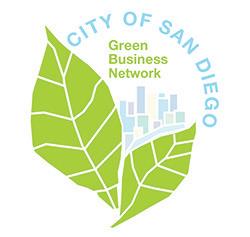
sandiego.gov/green-business-network | sustainability@sandiego.gov
SAN DIEGO GREEN BUILDING COUNCIL (SDGBC) The San Diego Green Building Council, its membership, and its partners are a great resource for all things sustainability. The SDGBC holds many educational and networking events focused on sustainability and green buildings. These events can connect you with sustainability professionals who can be helpful resources while you complete your goals. The SDGBC also has a Green Business Committee dedicated to helping San Diego businesses go green.
www.usgbc-sd.org/ for more information
ENERGY INNOVATION CENTER
The SDG&E Energy Innovation Center is an educational center located in Clairemont Mesa. It’s run by SDG&E and it offers free energy efficiency classes daily. Classes are open to all and often focus on specific business types such as restaurants, breweries, hotels, etc. There is even a full demonstration kitchen on site showcasing energy efficient restaurant equipment.
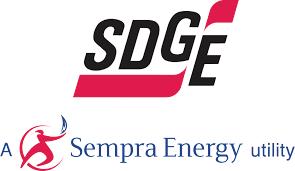
www.sdge.com/eic
If your business provides professional services such as electric, plumbing, HVAC, etc., the center can also be a source of professional development that can help establish your business as resource efficiency expert.
INCENTIVES, REBATES AND OTHER FUNDING PROGRAMS There are many Federal, State, City, and Agency sponsored funding opportunities in the form of grants and incentives to help sustainability projects become reality. The list below is just a sample, so keep a look out for other opportunities, there are more than you think. Check back periodically to the funding resources below to see what new funding opportunities may be available.
SDG&E Energy efficiency projects, electric vehicles charging stations, or industry specific equipment can be co-funded by available programs administered by SDG&E. Rebates and programs change periodically based on available funds. Connecting directly with a representative is a best way to understand your options.

https://www.sdge.com/businesses/savings-center/rebates-incentives sdge.com/business
SAN DIEGO COUNTY WATER AUTHORITY Water Smart initiatives is a onestop shop for resources provided by the SDCWA. This website has funding opportunities for both residential and commercial indoor and outdoor water efficiency projects.

watersmartsd.org
CITY OF SAN DIEGO The City of San Diego offers various programs and rebates that span from rainwater capture systems to composting bins. Make sure to check out their websites below to learn more:

sandiego.gov/water/conservation/rebates
sandiego.gov/water/conservation/
THE CENTER FOR SUSTAINABLE ENERGY: Is a nationwide nonprofit that administers many energy-savings related rebates and programs. They are also a good resource to help you understand the California Solar Initiative.
energycenter.org/portfolio
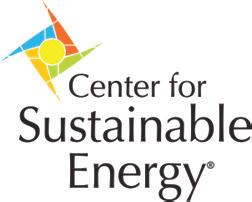
Below are some basic strategies that can lead to the more sustainable use of energy, water and waste resources. Remember the less energy and water you use and the less waste you produce can save you money and it helps the environment too! Keep in mind that depending on the complexity of the task and your team’s collective knowledge, it might be a good idea to consult a professional before recommending any specific strategies.
Also, when you sign up and connect with the City of San Diego’s Green Business network, you will be referred to individuals who can help navigate the resources listed below.
ENERGY SAVING TIPS FOR BUSINESSES Being energy efficient is the single most cost-effective way to cut energy use. Below is a good, but partial list of energy efficiency tips that can be easily implemented with little or no cost.
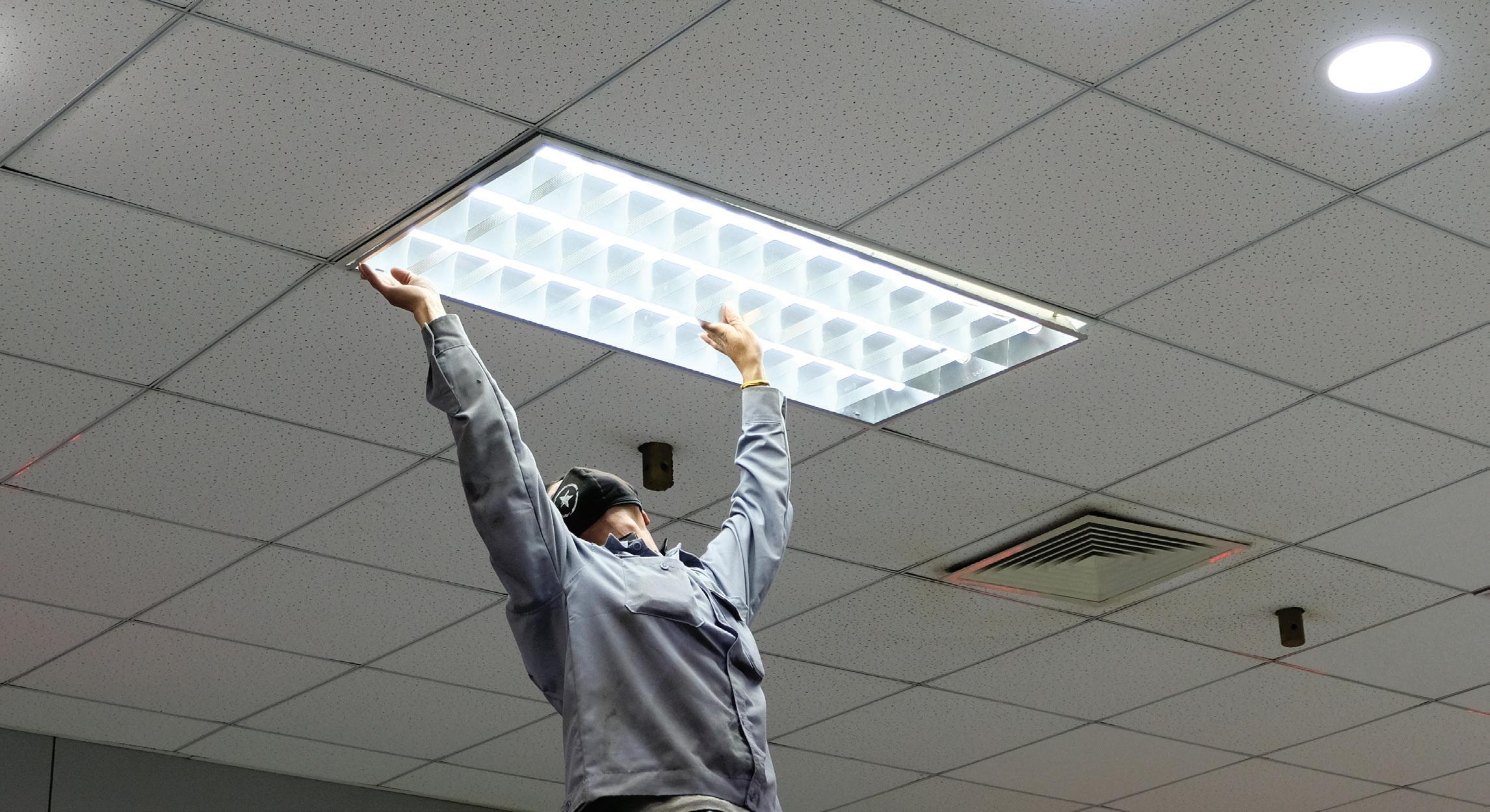
PERFORM AN ENERGY ASSESSMENT OR AN ENERGY AUDIT
Performing an energy audit is a great first step to understand how your business uses energy and it can also help identify strategies which can support your business in becoming more energy efficient. Energy audits are best conducted by a skilled energy professional and currently SDG&E offers free energy audits to businesses located within San Diego. Please visit the website below for more information on how to schedule a free energy audit.
sdge.com/bes or www.sdge.com/business-energy-solutions-program
BENCHMARKING Benchmarking is a method to understand your business’ energy use by comparing it to other, similar businesses in the area. This can be done through the EPA’s free Portfolio Manager tool. You can also work with the free Benchmarking Coach program provided by the Center for Sustainable Energy to help with the process: energycenter.org/sdrep/benchmarking.
REPLACE INCANDESCENT BULBS WITH LED BULBS LED bulbs save energy and have longer life span, which means they save you money on energy bills and staff time needed for maintenance. Some SDG&E programs help fund upgrades to more efficient LED lights: www.sdge.com/business-energy-solutions-program
LOOK FOR THE ENERGY STAR LABEL Look for the Energy Star label when replacing electrical office equipment. This will ensure a high energy efficiency standard.


STRETCH YOUR COMFORT LEVEL You can program your thermostat a few degrees warmer on hot days and a few degrees cooler on cold days. This means that your HVAC (Heating, Ventilation, Air Conditioning) equipment won’t have to work as hard, saving energy.

FOLLOW A PREVENTATIVE MAINTENANCE PLAN Make sure your heating and air conditioning equipment preventative maintenance plan is being followed which will ensure this equipment is running as efficiently as possible. Simple tasks like ongoing replacement of HVAC filters can have a dramatic impact on your energy use (it takes more energy to push air though a dirty filter) and cleanliness of the air flowing into your business.
TURN OFF ANY LIGHTS AND ELECTRICAL EQUIPMENT THAT ARE NOT IN USE Areas that are less used can be good candidates for the installation of simple occupancy sensors that can be purchased in general home improvement stores.

WATER SAVING TIPS FOR BUSINESSES Being water efficient can not only save you money but is critical in these times of drought. Water leaks can not only cause damage to your water bill but also your business, so it’s important to know how your water flows. Below is a good, but partial list of water efficiency tips that can be easily implemented with little or no cost.
PERFORM A WATER USE AUDIT Understanding how your business uses water is the first step to identifying strategies to help your business become more water efficient. The City of San Diego Public Utilities Department has several programs designed to help businesses reduce the amount of water they use, including water survey programs.
Visit sandiego.gov/water/conservation/surveyprogram to learn more about this program.
INDOOR WATER:
TRACK YOUR WATER You can track your usage by entering your utility bill data into a spreadsheet to identify any spikes in usage that may be caused by significant water leaks. If you don’t have Excel you can easily use the free Google Sheets format.
TRACK YOUR HABITS Work with your employees on water conservation habits. Make sure everyone is on board with saving water and spotting water leaks.
TRACK YOUR PRODUCTS Install “Water Sense” low-flow water fixtures when feasible. The water sense label indicates that the fixture uses an efficient amount of water.

IDENTIFY Assess and fix any leaks by inspecting the building’s plumbing, water fixtures and water cooling/heating equipment on a regular basis.

Check out City of San Diego programs and rebates available to support water efficiency (the website starts with residential rebates, scroll down to get to business rebates section)
OUTDOOR WATER:
AUDIT There are programs available that support outdoor water use audits. For information on how to sign up, visit the following website.
sandiego.gov/water/conservation/surveyprogram
LANDSCAPING If your business has outdoor landscaping, it should also consider strategies that save or capture water:
• Reduce landscape irrigation by planting drought tolerant plants and irrigate your landscaping at night.
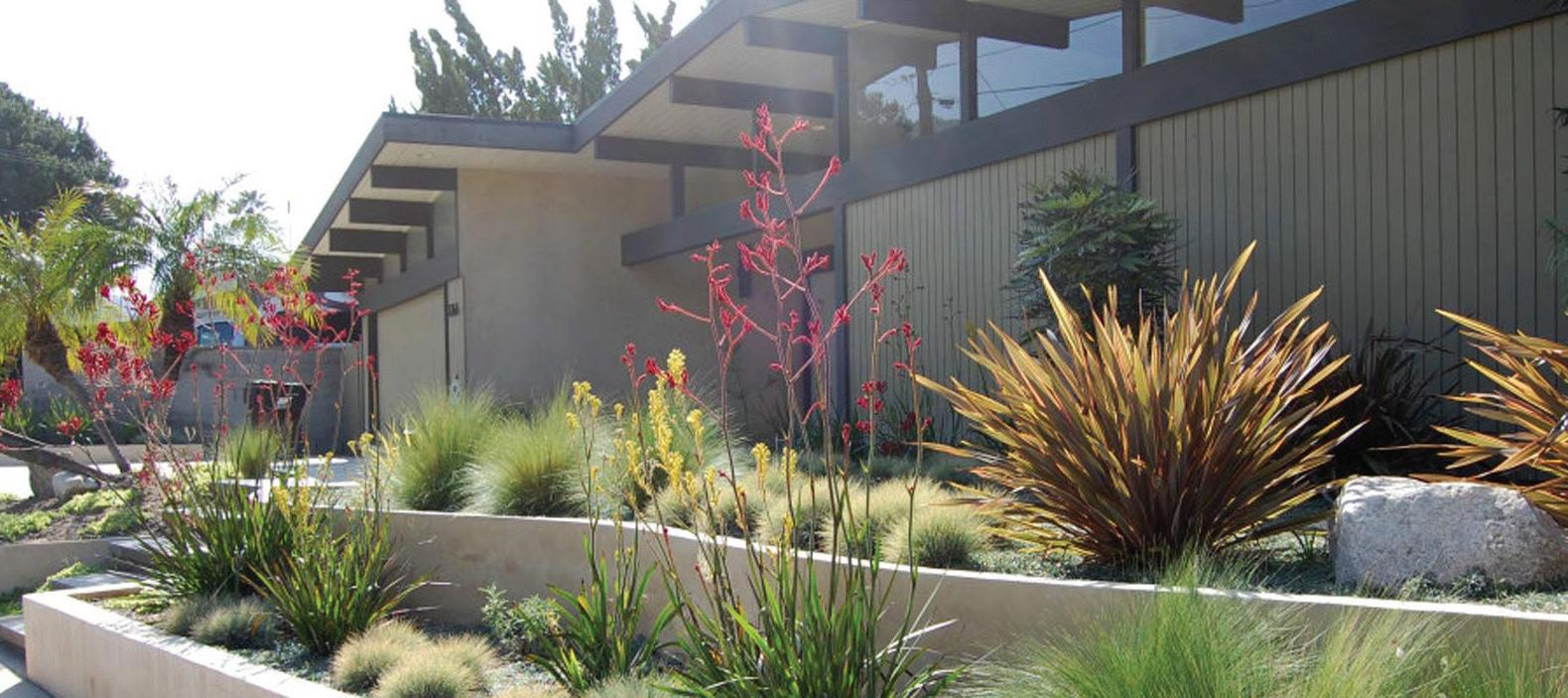
• Consider installing a separate water meter for irrigation use. This will allow you to understand how much water is being used for just for landscaping.
• Consider installing rain barrels that capture rain water for irrigation use and help prevent stormwater runoff.
WASTE REDUCTION TIPS FOR BUSINESSES Having a well thought out waste management program will not only help you meet State and local waste regulations and requirements (AB 1826, San Diego’s Zero Waste Plan), it can save you money! The less waste you produce and send to the landfill, the less you pay your waste hauler every month to do it for you. Below are some tips that can help you reduce the amount of waste your business produces and ways to recycle more of the waste you do produce.
Understanding how your business creates and disposes waste is a great way of identifying practices that will help reduce the amount of waste your business produces. If you are wasting resources, chances are that you are also wasting money! Did you know that waste hauler rates are higher for waste than for recycling? Good planning and switching to reusable alternatives can dramatically impact the cost of your waste disposal. The City of San Diego’s Environmental Services Department has many tools and programs to help San Diego businesses reduce waste including how to set up a successful recycling plan.
sandiego.gov/environmental-services/recycling/business
FOCUS ON REDUCING THE AMOUNT OF WASTE YOUR BUSINESS PRODUCES:
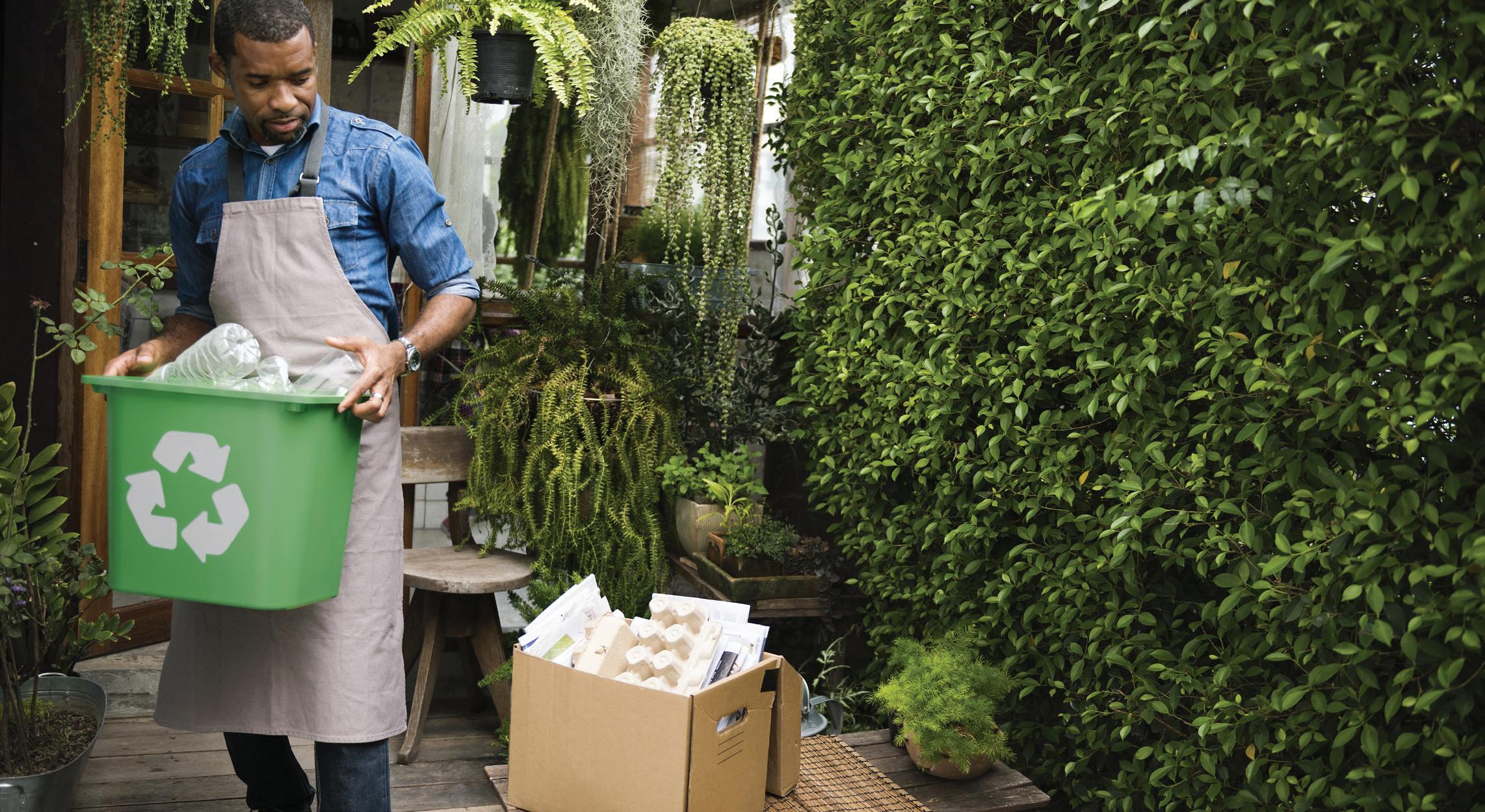
• Go paperless
• Buy products that can be reused, re-purposed, or recycled
• Donate all food safe for human consumption
• Observe and track items in your waste bin, see if you can influence the number of items you purchase to lower waste, or if some of these items should end up in recycling bin instead.
COMPOST Onsite-compost if possible, if not, look into a composting collection service. The City of San Diego and many of the major waste haulers have composting collection services available.
TEACH Train your employees early on how to properly sort and separate recyclable material from the waste stream. Incorporate Zero Waste into employee orientation.
REMIND Print signs to help your employees keep recycling fresh in their minds
OUTSOURCE Work with vendors to eliminate non-recyclable packaging
TAKE NOTICE Give preference to vendors who embrace zero waste goals
LEAD Dedicate at least one person for a zero waste leadership role
OTHER WASTE REDUCTION RESOURCES In the table below are several local and national organizations dedicated to helping businesses like yours produce less waste and recycle the waste that is produced. If your team finds other resources, please let us know and we will add them to this list.
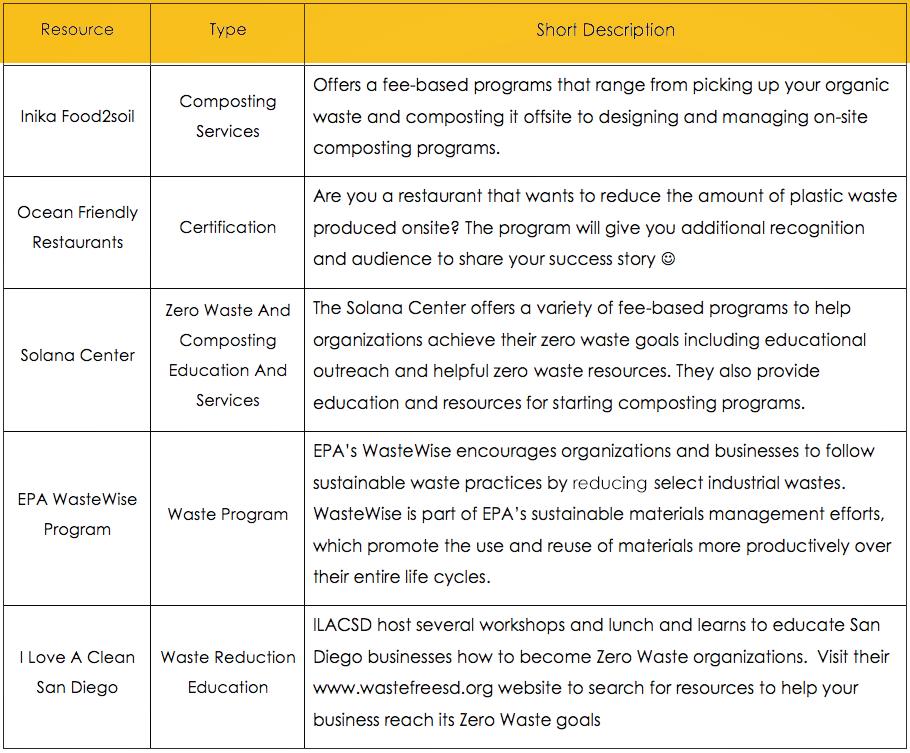
THE FOLLOWING TEMPLATES CAN BE PRINTED OUT AND USED BY YOUR SUSTAINABILITY CHAMPIONS TEAM. THE TEMPLATES ARE GUIDELINES WE RECOMMEND BUT WE ENCOURAGE YOU TO MODIFY THEM AS YOU SEE FIT.
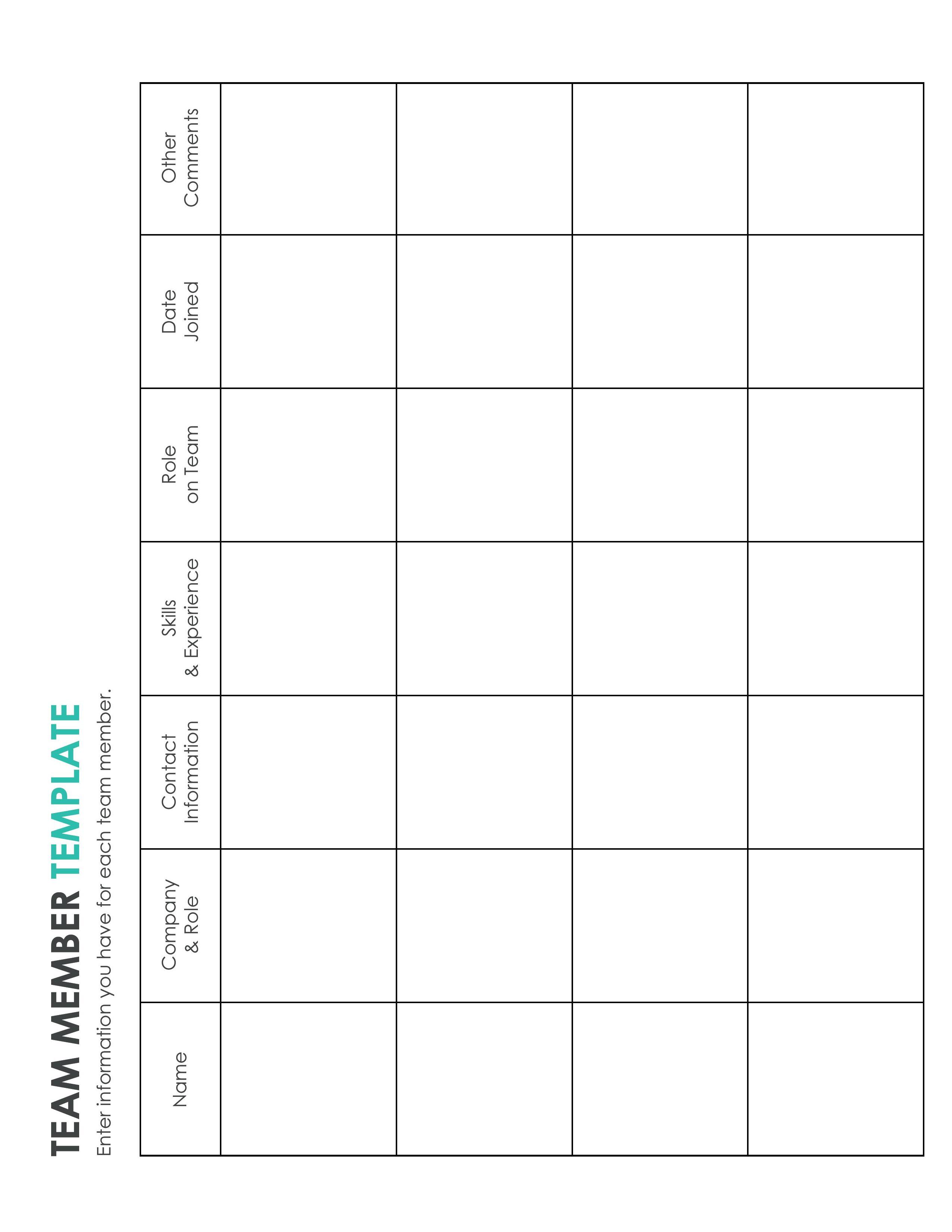

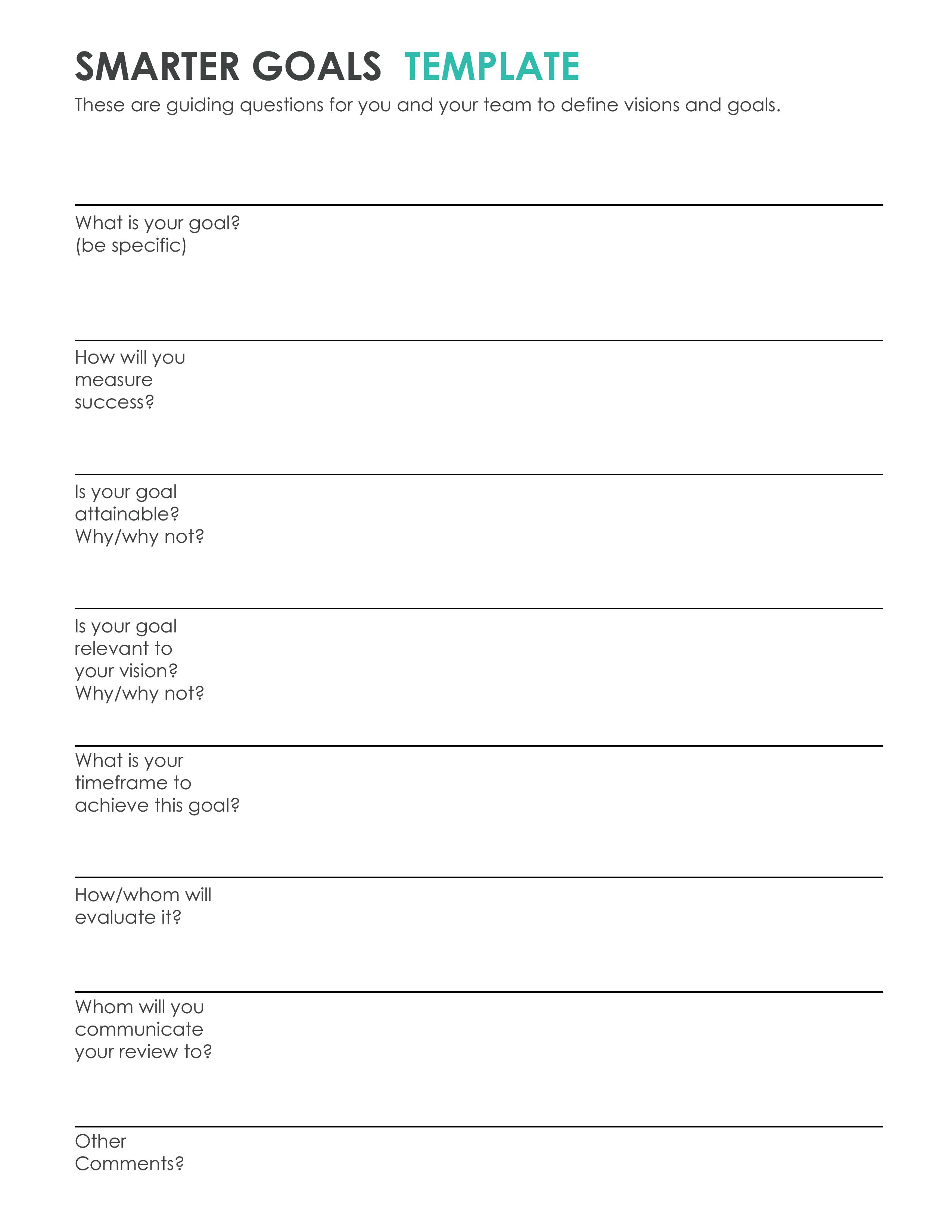

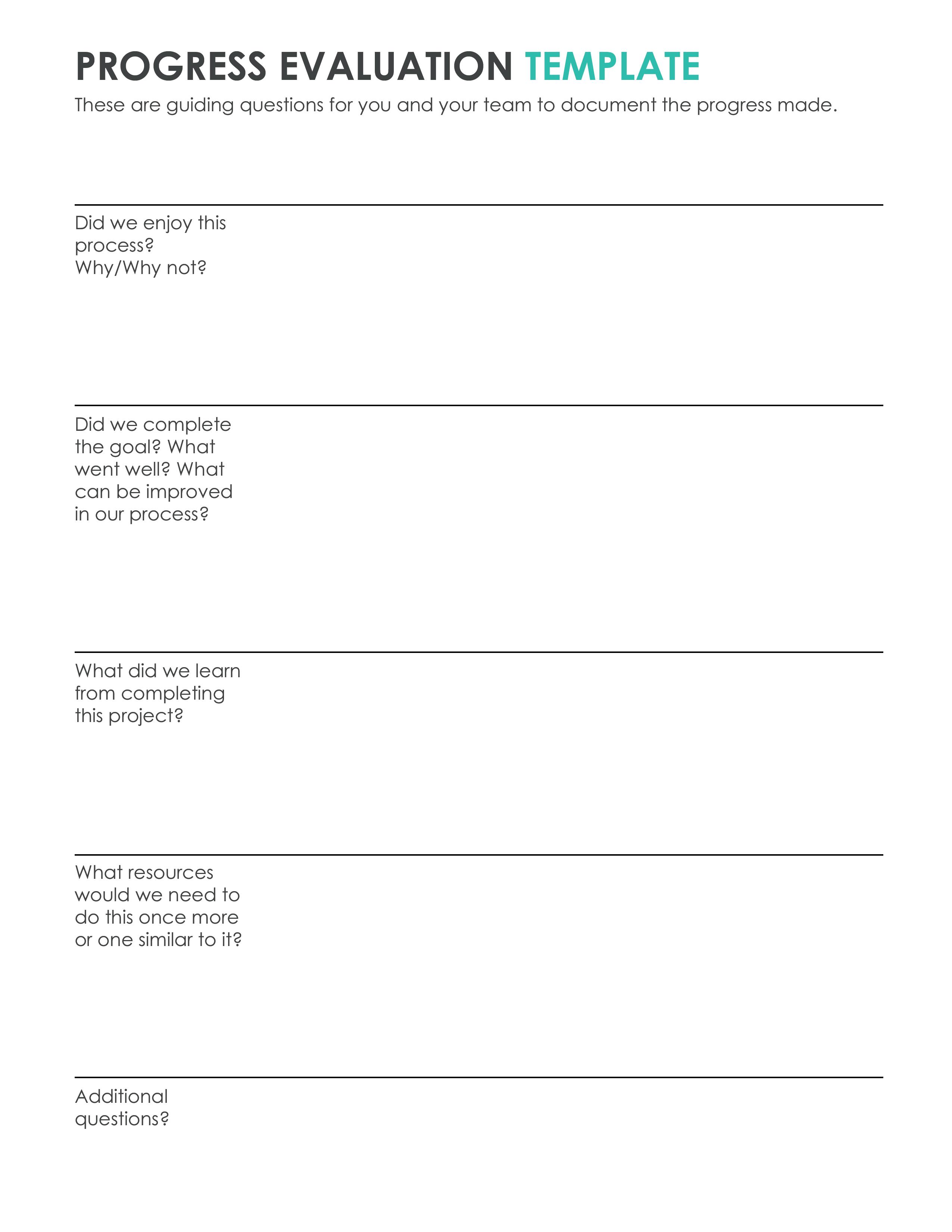

THIS HANDBOOK WAS PREPARED BY THE SAN DIEGO GREEN BUILDING COUNCIL
THIS HANDBOOK HAS BEEN DEVELOPED WITH THE FINANCIAL SUPPORT FROM THE CITY OF SAN DIEGO. OPINIONS AND RECOMMENDATIONS STATED IN THIS HANDBOOK DON’T NECESSARILY REFLECT THE POLICIES OF THE CITY OF SAN DIEGO. NO SPECIFIC PRODUCTS OR SERVICES LISTED IN THIS HANDBOOK ARE ENDORSED BY THE CITY OF SAN DIEGO.
THE PHOTOS YOU’VE SEEN ARE SOURCED BELOW: UNSPLASH.COM, SHUTTERSTOCK, NORTH PARK MAIN STREET A7D CREATIVE GROUP, HORIZONLANDSCAPE.NET
